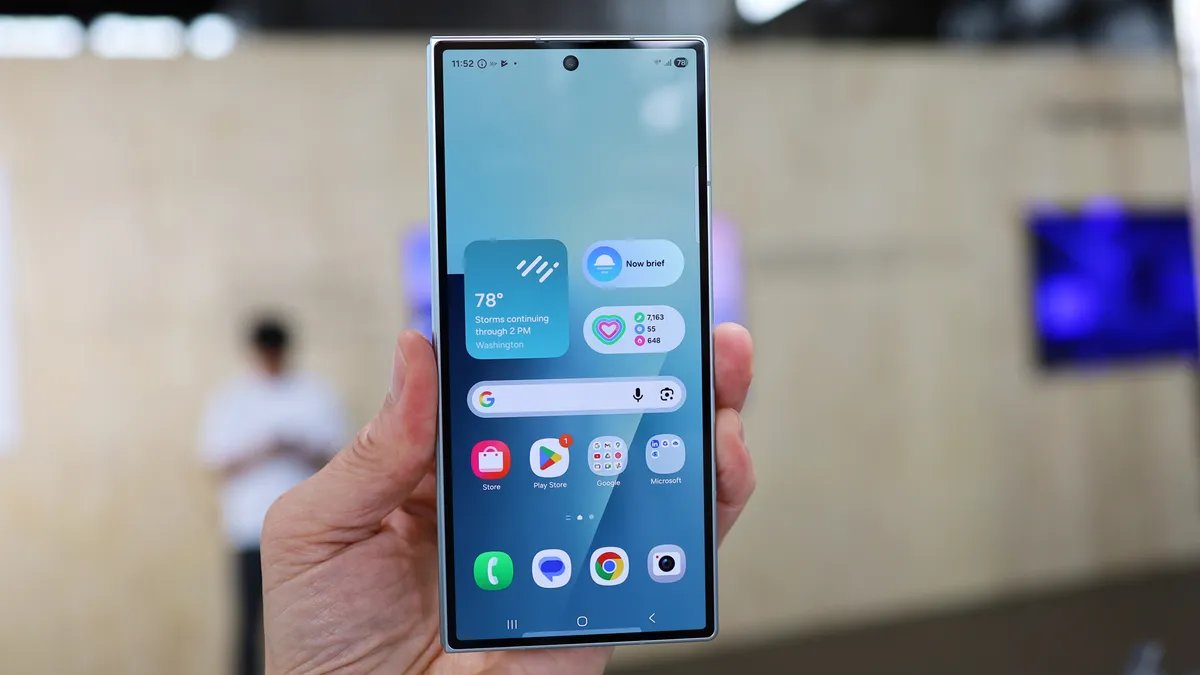
This week, Samsung made headlines by unveiling its latest foldable smartphones: the Galaxy Z Fold 7, Galaxy Z Flip 7, and Galaxy Z Flip 7 FE during the much-anticipated Galaxy Unpacked showcase. Among these innovative devices, the Galaxy Z Fold 7 stands out as a significant advancement in Samsung's folding phone lineup, showcasing a blend of style, performance, and engineering prowess.
The Galaxy Z Fold 7 is not just another iteration; it represents a leap forward for Samsung, being the thinnest, lightest, and most stylish foldable phone to date. When unfolded, it measures a mere 4.2mm, and when folded, it maintains a compact 8.9mm thickness. This remarkable design achievement makes the Fold 7 3.2mm (or 24%) thinner than its predecessor, the Galaxy Z Fold 6, and matches the thickness of the flagship Galaxy S25 Ultra.
One of the standout features of the Galaxy Z Fold 7 is its larger 8-inch display, offering users an expansive viewing experience. The reduction in thickness was no small feat; Samsung adopted an innovative approach in designing the Fold 7. According to Blake Geiser, the SVP of Smartphone Product Management at Samsung North America, the primary objective was to create a high-performing device that matched the sleekness of traditional smartphones like the Galaxy S25 Ultra.
To achieve this, Samsung ensured that the Fold 7's thickness aligned with the best smartphones on the market while also addressing a common concern among users: the display crease. Blake noted that while all folding phones have some level of crease, the Fold 7 has made significant improvements in this area. Users may still notice the crease under certain lighting conditions, but it is barely noticeable to the touch.
Samsung's engineering team made several key adjustments to the Fold 7's design to enhance its performance. The folding mechanism features a teardrop-style hinge that allows for a wider radius, contributing to the phone's sleek profile. Additionally, a very thin titanium sheet is incorporated into the bottom layer of the screen, while a carbon fiber layer reinforces the area where the crease forms. This innovative design pushes the crease up, minimizing its visibility and maximizing durability.
With such a focus on achieving a lightweight and slim design, Samsung had to make certain compromises, one of which is the removal of S Pen support. Previously, the Galaxy Z Fold 4 included a digitizer layer to allow for S Pen compatibility, but this feature has been omitted in the Fold 7. Blake explained that this decision was made to enhance the durability of the screen and to meet user demands for a sleeker device.
While the absence of S Pen support may disappoint some Samsung enthusiasts, especially considering that competing devices like the Oppo Find N5 offer stylus compatibility, Samsung believes it was a necessary trade-off. Blake emphasized that user feedback indicated a preference for a larger screen and improved battery life over the inclusion of the S Pen.
Having used the Galaxy Z Fold 7 for 36 hours, it appears to largely fulfill Samsung's vision of a regular-sized folding phone. While some users may miss the S Pen functionality, many will find that the enhanced design and features make it a worthwhile investment. The Fold 7 is poised to be Samsung's best foldable phone to date, balancing various objectives to meet consumer expectations.
Stay tuned for our comprehensive review of the Galaxy Z Fold 7, where we will delve deeper into its features and performance. For now, it seems that Samsung's latest offering will be well-received by both loyal fans and new customers alike.